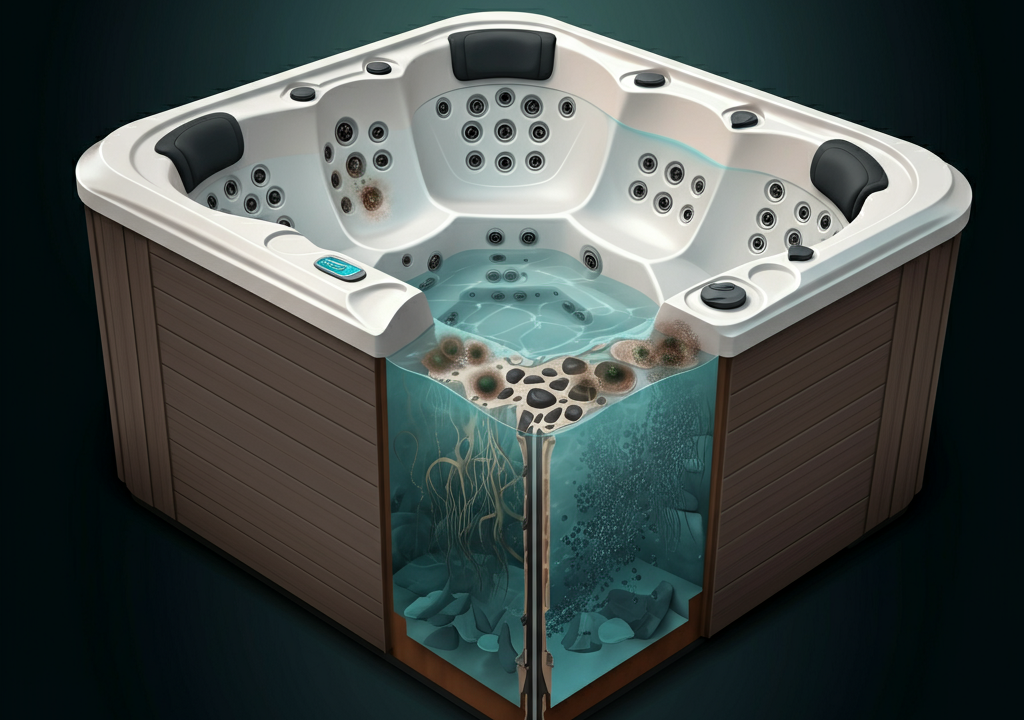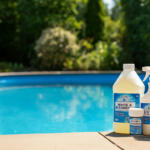
Hot tubs are the epitome of relaxation, but lurking in the warm, moist environment could be an unwelcome guest: black mold. For hot tub owners, especially those who prioritize health and home maintenance, understanding the risks of black mold and how to deal with it is critical.
This blog will guide you through identifying black mold in hot tubs, understanding the associated health risks, and learning how to prevent and remove it effectively. By the end, you’ll be equipped with tips to maintain a clean and safe hot tub environment for yourself and your family.
What is Black Mold and Why Should Hot Tub Owners Worry?
Black mold, scientifically known as Stachybotrys chartarum, is a type of fungus that thrives in damp environments. While black mold can grow on a variety of surfaces, hot tubs provide the perfect conditions for it to flourish due to their high humidity, warmth, and water exposure.
The presence of black mold in your hot tub isn’t just unsightly; it can also pose health risks and damage your spa’s equipment. Knowing how to spot and manage black mold can save you time, money, and potential health complications.
How to Identify Black Mold in Your Hot Tub
Black mold may not always be immediately visible, but there are telltale signs to watch out for.
Common Locations for Black Mold in Hot Tubs
Black mold tends to grow in areas that remain consistently damp. These include:
- Underneath hot tub covers where condensation gathers.
- Around jets and filters, due to trapped moisture and organic debris.
- Water lines and skimmer baskets, which may collect biofilm (a slimy layer of microorganisms).
- Inside the plumbing system, where stagnant water can promote mold growth.
Visual Characteristics
Here’s how to confirm if it’s black mold:
- Color and texture: Black mold is typically black (or dark green in some cases) with a slimy or fuzzy texture.
- Smell: A persistent, musty odor is a strong indicator of mold.
- Stains or discoloration: Look for dark spots or patches on surfaces near water.
If you suspect black mold but aren’t sure, consider using a home mold test kit for confirmation.
Health Risks of Black Mold Exposure
Exposure to black mold can have serious health impacts, especially for individuals with respiratory issues, allergies, or weakened immune systems.
Short-Term Effects
- Allergic reactions such as sneezing, coughing, and skin irritation.
- Respiratory symptoms like shortness of breath or nasal congestion.
Long-Term Effects
For individuals consistently exposed, symptoms could escalate to:
- Chronic respiratory issues such as asthma or bronchitis.
- Toxic mold syndrome, which may cause neurological symptoms like headaches, memory loss, or fatigue.
While not everyone reacts to black mold, it’s better to take precautions than risk exposure.
Preventing Black Mold in Your Hot Tub
Keeping black mold at bay requires consistent maintenance and attention. Here are some practical tips:
Regular Water Maintenance
- Maintain proper water balance by regularly testing pH and chlorine levels.
- Shock your hot tub water weekly to kill bacteria and organic matter.
- Replace water routinely (every 3–4 months) based on your usage.
Cleaning Practices
- Clean the hot tub cover and underside regularly to prevent buildup of moisture and mold.
- Scrub water lines and hard-to-reach areas like jets and filters.
- Sanitize your hot tub shell with a mold-killing solution, such as 1 part bleach to 10 parts water.
Keep Humidity Low
Prevent excessive humidity around the hot tub by:
- Using a well-fitted cover when the hot tub isn’t in use.
- Installing proper ventilation if the hot tub is indoors.
Removing Black Mold from Your Hot Tub
If black mold has already made its way into your hot tub, here’s how to remove it safely:
Step-by-Step Guide
- Drain the hot tub to expose affected areas, and dispose of the water safely.
- Wear protective gear, including gloves and a mask, to avoid exposure during cleaning.
- Use a mold-killing cleaner, either a specialized solution or a mix of mild bleach and water. Avoid abrasive cleaners that could damage the hot tub’s surface.
- Scrub affected areas, focusing on visible mold patches and slime buildup.
- Clean filters and jets, as these are common mold havens. If they appear heavily infested, consider replacing them.
- Rinse thoroughly to ensure all cleaning residue is removed.
- Refill the hot tub and shock the water to sanitize it completely.
Caution
Avoid using the hot tub immediately after cleaning. Allow the water to circulate for 24 hours and recheck chemical levels before use.
When to Call a Professional
While minor mold issues are manageable for most homeowners, in some cases you’ll need professional assistance:
- The mold is widespread inside the plumbing or difficult-to-reach internal components.
- After cleaning, the mold keeps returning, indicating systemic contamination.
- You have health concerns due to potential exposure.
Professional treatment ensures that all mold is eradicated and prevents future outbreaks.
Final Thoughts on a Clean, Safe Hot Tub Environment
Maintaining a hot tub is more than an investment in luxury; it’s an investment in your health and enjoyment. By staying vigilant against black mold, you not only protect your equipment but also create a safe space to relax.
Regular cleaning, proper water balance, and early intervention are your best defenses against black mold. If you spot any signs of contamination, act quickly to address the issue before it escalates.
Looking for more tips on hot tub maintenance? Subscribe to our newsletter and stay ahead of every issue that keeps your spa experience stress-free.









No Comments